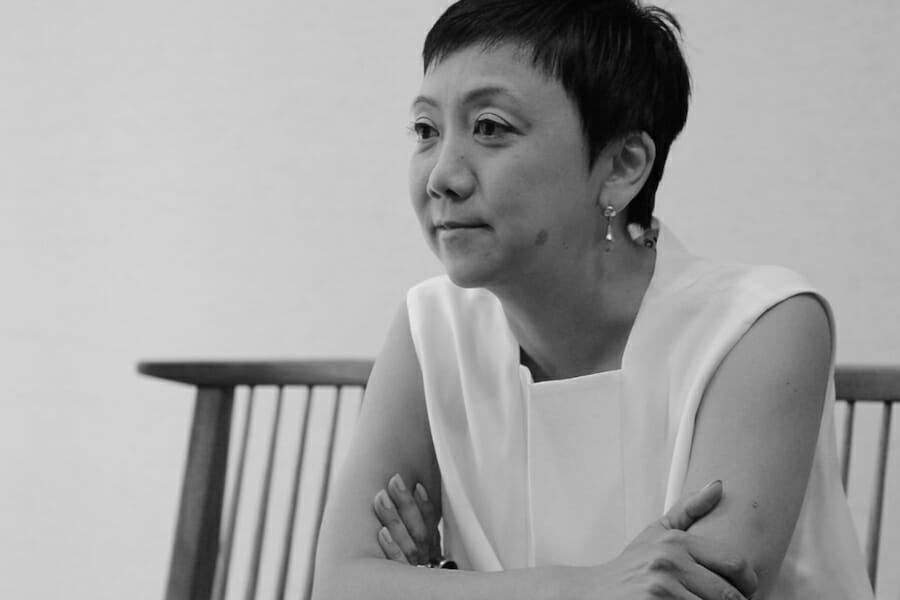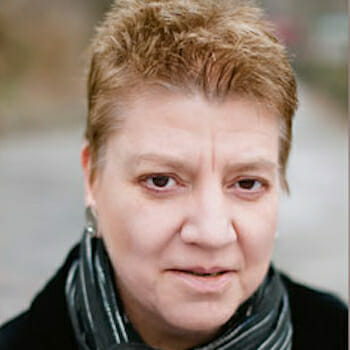
Culture
Conversation with Yukie Kamiya, Director of Japan Society
Yukie Kamiya, Director of Japan Society New York Gallery since November 2015, is responsible for programming the Society’s exhibitions and visual art projects exploring Japanese art in a global context.
Prior to this, Kamiya was Chief Curator of the Hiroshima City Museum of Contemporary Art (Hiroshima MOCA) from 2007 to 2015. She began her career in the United States at the New Museum, New York, from 2003 to 2006. Kamiya has curated many international exhibitions focusing on artists from Japan and Asia, including Cai Guo Qiang, Yoko Ono, Jiro Takamatsu, and Do Ho Suh. She also served as guest curator for the Japan Foundation and Goethe Institute and curated group exhibitions including “Discordant Harmony: Critical Reflection of Imagination of Asia,” and “Re: Quest-Japanese Contemporary Art since the 1970s”. “Under Construction: New Dimension of Asian Art” toured Beijing, Seoul, Taipei, and Tokyo. Kamiya received the Academic Prize from the National Museum of Western Art, Tokyo for curating “Simon Starling: Project for a Masquerade (Hiroshima)” in 2011.
Of Japan Society Gallery, Kamiya has said previously: “I look forward to making the gallery a venue for exploring visual arts which express Japan’s inherent global temperament—its links to the U.S., to its neighboring nations in Asia, as well as to Europe and Latin America. With its unique position in New York City, Japan Society Gallery can present Japanese art—both traditional and contemporary – from a new perspective, one that considers the passing of time as a single, continuous flow of ideas.”
I sat down to talk with Yukie Kamiya over Zoom.
Can you describe the exhibition ‘Boro Textiles: Sustainable Aesthetics’?
Boro (“rags” or “tatters”) are patchwork textiles hand-pieced by peasants in Japan in the 19th and early 20th centuries. The inability to cultivate cotton in the northern climate of Tohoku necessitated the practice of stitching remnants of used fabric into utilitarian items, including blankets, coats, and mittens. These hard-used garments – reworked over generations – express essential principles of Japanese ethics and aesthetics, such as an appreciation for distinguished imperfections and the avoidance of waste.
For the first time in the U.S., this exhibition assembles over 50 archival pieces from the personal collection of folklorist and cultural anthropologist Chuzaburo Tanaka (1933–2013) presented alongside new portraits by editor-photographer Kyoichi Tsuzuki, designs by pioneers of Japanese avant-garde fashion Rei Kawakubo, Issey Miyake, Yohji Yamamoto, and textile-based works by Susan Cianciolo and Christina Kim – a generation of contemporary artists influenced by the aesthetics and ethics of mending, patchwork, and re-use. The installation, designed by New York architecture firm SO – IL, rediscovers this traditional handicraft, its history of survival and ingenuity, and its continued legacy within creative practices today.
You can see Boro textiles all over Japan but typically in Tohoku (northern Japan). Although the concept of “Boro” used for old textiles, may have a slightly negative connotation in Japan, Boro textiles essentially embody the Japanese aesthetics over centuries. Especially in Northern Japan, in Tohoku. And the focus of our exhibition is on Tohoku.
Tohoku’s climate is very cold – too cold for people to live only in traditional kimono. And cotton cannot be cultivated in Northern parts. So Tohoku clothing has to be thick and warm for people to survive. People use and reuse old fabric and patch up holes in their clothes. And they layer their clothing on- layer upon layer.
This exhibit of Boro textiles embodies the Japanese spirit: aesthetics, sustainability, and creativity. These concepts make for a great platform.
Your phrase, ‘slight negative connotation,’ reminds me of 1970s Nagasaki. People typically described their homes and possessions as ‘poor, bare, and unworthy.’ The patchwork kimono in your exhibit appeared to me to be both painful and a beautiful symbol.
Japan Society has a long history of support for Tohoku. Right after the earthquake and three-part disaster of 3/11/11, the very next day, support poured forth.
And Japan Society and the American people have continued to support Tohoku, its people, and its cultural activities. And they have helped our focus on creativity, engagement, commitment, and disaster relief.
The Boro Exhibit was launched just as COVID broke out in New York City. The fact that the exhibit is virtual is fortunate.
All the lenders of textiles have agreed to extend the exhibit one more month to July 2020. These include folklorist, cultural anthropologist, and museum director Chuzaburo Tanaka (1933–2013); editor-photographer Kyoichi Tsuzuki; and avant-garde fashion designer Yohji Yamamoto.
In my previous post in Hiroshima at the Hiroshima City Museum of Contemporary Art, my focus was on art associated with trauma, disaster, and memory. This liberating experience has given me a good example and practice.
For the Boro Exhibit, sustainability is one of the keywords. It has been nice to use the heritage of the ‘60s to interpret keywords for the exhibit – but I never thought of the virus!
Yes, the opening of this exhibit to foot traffic has had to be postponed. But the opening of the Olympics has had to be postponed.
Japan Society is not your first New York posting. Can you tell me about your time at New York’s New Museum and The Jewish Museum as well?
Yes, I served as one of the guest curators for the Museum’s annual series “Sights and Sounds: Global Film and Video” in 2016.
At the New Museum, I was privileged to meet the Japanese architectural firm SANAA- the two Tokyo based architects, Kazuyo Sejima and Ryue Nishizawa, who designed and constructed the New Museum. SANAA was awarded the Pritzker Architecture Prize in 2010 and was named one of “The World’s 50 Most Innovative Companies” by Fast Company in 2016.
How did you come to the concept of ‘Boro’? What was your way in?
I went to see a museum which exhibited a collection of Boro textiles by the folklorist and cultural anthropologist, Chuzaburo Tanaka. He was an enthusiastic collector of Boro textiles, always looking for something undervalued.
The museum installation was perhaps a little sentimental and overenthusiastic.
I wanted to put “Boro” into a different context.
Have you met Yoko Ono?
Yes, I worked with her at the exhibition to commemorate the Hiroshima Art Prize in 2011. It was fantastic!
After the earthquake, Ono suggested that the exhibit be dedicated to the earthquake and the victims.
And as you know, Ono’s “Wish Tree” was in the Japan Society lobby at the 5th anniversary of the earthquake.
Can you share with us any plans for programs beyond the pandemic?
During this pandemic, Japan Society’s public programs- our lectures, talks, and workshops are all online. And we are all looking forward to reopening as soon as the pandemic is over.

